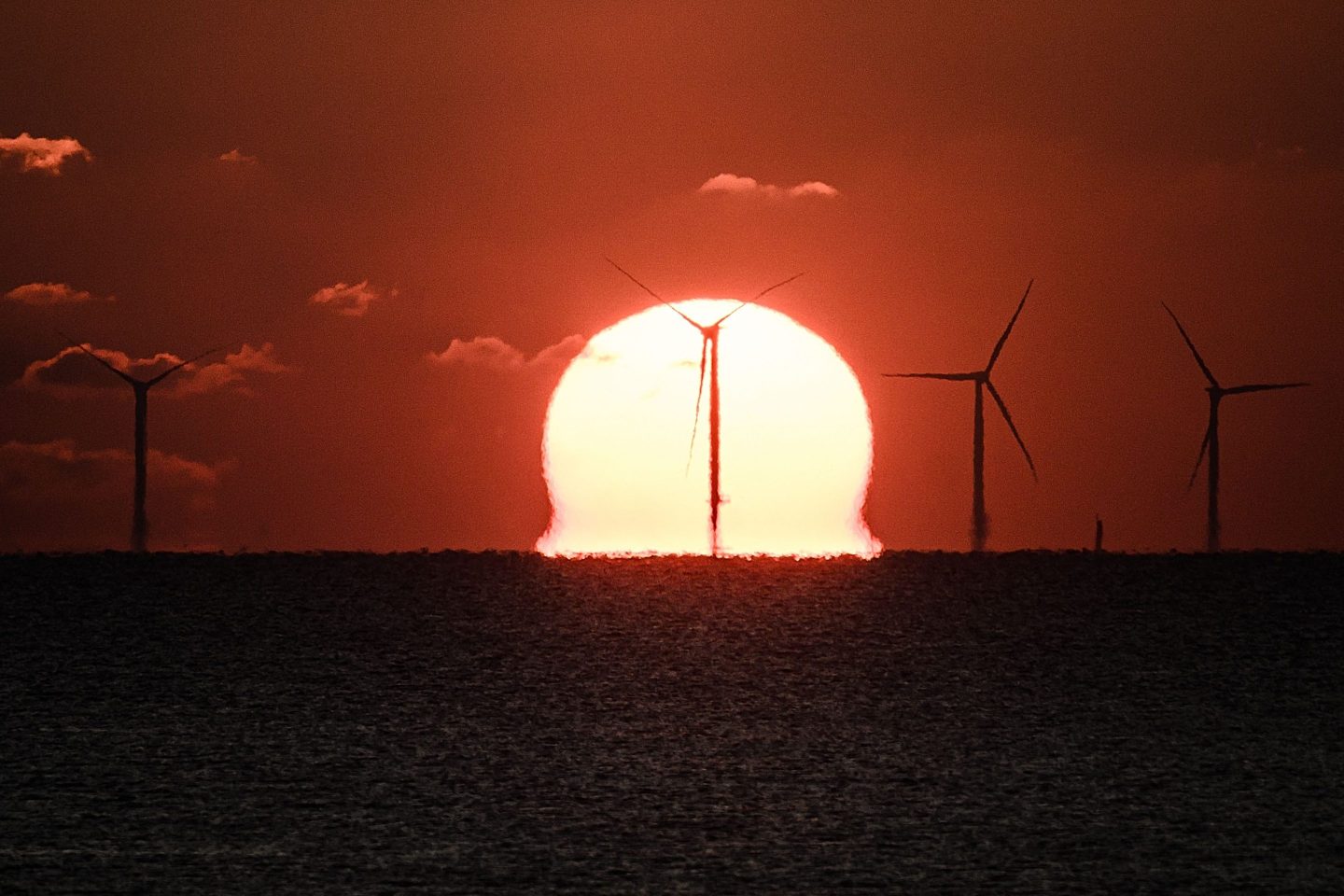The Future Of Expensive Offshore Wind Energy Projects

Table of Contents
Understanding the High Costs of Offshore Wind Energy Projects
Offshore wind energy projects are notoriously expensive, a reality stemming from several interconnected factors. Understanding these cost drivers is critical to finding solutions and ensuring the long-term viability of this vital renewable energy source. Key factors contributing to the high costs of offshore wind farm projects include:
-
High Initial Capital Expenditure: The sheer scale and complexity of offshore wind infrastructure necessitate substantial upfront investment. This includes the considerable expenses of foundation installation (e.g., monopiles, jackets, floating platforms), the laying of extensive subsea cables for grid connection, and the transportation and installation of massive wind turbines. These installation costs are a major component of overall project expenses.
-
Significant Operational and Maintenance Costs: The harsh marine environment presents unique challenges. Offshore wind farms require regular maintenance and repairs, often necessitating specialized vessels and skilled technicians. The cost of accessing and servicing turbines in often-turbulent waters significantly impacts the operational budget. These operational costs are substantial and need to be factored into the overall lifecycle cost assessment of these projects.
-
Lengthy Permitting and Approval Processes: Securing the necessary permits and approvals for offshore wind projects is a time-consuming and complex process, often involving multiple regulatory bodies and stakeholders. These long lead times contribute to increased project timelines and ultimately, higher costs. Efficient permitting of offshore wind is therefore crucial to reducing the overall cost and speeding up deployment.
-
Specialized Equipment and Skilled Labor: The construction and maintenance of offshore wind farms demand specialized equipment and a highly skilled workforce. The scarcity of these resources, coupled with the specialized training required, drives up labor and equipment costs considerably. This specialized expertise is essential but contributes directly to higher overall project costs.
-
Financial Risks Associated with Unpredictable Weather Conditions: Offshore wind projects are inherently vulnerable to unpredictable weather conditions, which can lead to delays, damage, and increased costs. These risks must be carefully managed and accounted for in the project financing, adding to the overall expense of developing these projects. Financing offshore wind projects therefore requires careful risk assessment and mitigation strategies.
Technological Advancements Reducing Offshore Wind Costs
Significant technological advancements are underway, promising to drastically reduce the costs associated with offshore wind energy. These innovations target various aspects of the project lifecycle, from turbine design and manufacturing to installation and maintenance:
-
Larger and More Efficient Wind Turbines: Next-generation wind turbines are larger and more efficient, generating significantly more energy per unit. This increased energy output translates to lower costs per kilowatt-hour, making offshore wind more competitive. Wind turbine technology advancements continue to improve efficiency and reduce the overall cost of energy production.
-
Floating Offshore Wind Technology: Floating offshore wind turbines enable the harnessing of wind energy in deeper waters, expanding the geographical areas suitable for offshore wind farms. This access to deeper water areas significantly increases the potential for offshore wind energy production, boosting overall capacity and spreading out the costs.
-
Improved Manufacturing Processes: Advances in manufacturing processes are leading to lower production costs for wind turbine components. Economies of scale, automation, and the use of advanced materials are all contributing to cost reductions. Cost reduction strategies in manufacturing are key to making offshore wind more economically viable.
-
Advanced Digital Tools: The adoption of advanced digital tools for design, construction, and operation is optimizing project efficiency, reducing waste, and minimizing delays. This includes improved simulations, data analysis, and remote monitoring capabilities.
-
Automated Maintenance and Monitoring Systems: Automated maintenance and monitoring systems are reducing operational costs and downtime by enabling early detection and prevention of potential problems. Predictive maintenance using sensor data minimizes costly repairs and maximizes turbine uptime.
Policy and Regulatory Support for Offshore Wind Energy
Government policies and regulations play a crucial role in shaping the future of offshore wind energy. Supportive frameworks can significantly accelerate the deployment of offshore wind and drive down costs:
-
Government Subsidies and Tax Incentives: Government subsidies and tax incentives can stimulate investment in offshore wind projects, making them more financially attractive for developers. These incentives are often necessary to help offset the higher initial investment costs.
-
Streamlined Permitting Processes: Streamlining the permitting process reduces delays and lowers associated costs. Efficient regulatory frameworks are essential to ensuring a swift and smooth project approval process.
-
Clear and Stable Regulatory Frameworks: Clear and stable regulatory frameworks provide investors with the confidence needed to commit to large-scale offshore wind projects. Predictable regulatory environments are key to attracting private sector investment.
-
Support for Research and Development: Government support for research and development in offshore wind technology is crucial for driving innovation and lowering costs. Continued investment in R&D is essential to maintaining the competitiveness of offshore wind energy.
-
Integration into National Energy Strategies: The integration of offshore wind energy into national energy strategies underscores its importance and facilitates its broader adoption. National energy policies should prioritize offshore wind energy development to meet sustainability and security goals.
The Future Landscape of Expensive Offshore Wind Energy: Predictions and Outlook
The future of offshore wind energy is bright, despite the current challenges. Several factors suggest a promising trajectory for cost reduction and market expansion:
-
Market Growth Projections: The offshore wind market is projected to experience substantial growth in the coming decades, driven by increasing demand for clean energy and supportive government policies. The market forecast shows a significant expansion, particularly in regions with favorable wind resources.
-
Cost Reduction Projections: Cost reductions resulting from technological advancements and economies of scale are expected to make offshore wind increasingly competitive with other energy sources. Cost reduction strategies implemented across the sector will likely decrease the levelized cost of energy (LCOE) over time.
-
Contribution to Renewable Energy Targets: Offshore wind energy is poised to play a significant role in achieving national and global renewable energy targets. The renewable energy growth relies heavily on increased offshore wind capacity.
-
Enhanced Energy Security and Independence: Offshore wind energy can contribute to greater energy security and independence by diversifying energy sources and reducing reliance on fossil fuels. Energy independence is often cited as a major justification for the expansion of renewable energy sources, such as offshore wind.
-
Ongoing Challenges and Opportunities: Despite the optimistic outlook, challenges remain, including grid integration issues, environmental concerns, and the need for skilled labor. Addressing these challenges through collaboration and innovation will ensure the sustainable growth of this important sector.
Conclusion
While the high costs of offshore wind energy projects are currently a significant factor, technological advancements, supportive policies, and increased economies of scale promise a brighter future. The cost of offshore wind energy is expected to decrease significantly over the coming years, making it a more competitive and accessible source of clean energy. To learn more about the ongoing innovations and future prospects in mitigating the high costs of offshore wind energy projects, continue exploring resources dedicated to renewable energy and sustainable energy solutions. The future of affordable and efficient expensive offshore wind energy is within reach, and your engagement can help accelerate its arrival.

Featured Posts
-
 Swiss Leaders Strong Statement Condemnation Of Russias Actions In Ukraine
May 03, 2025
Swiss Leaders Strong Statement Condemnation Of Russias Actions In Ukraine
May 03, 2025 -
 Trump Et Macron Au Vatican Un Echange Tendu Revele
May 03, 2025
Trump Et Macron Au Vatican Un Echange Tendu Revele
May 03, 2025 -
 Oklahoma Severe Weather Timeline Strong Winds Expected
May 03, 2025
Oklahoma Severe Weather Timeline Strong Winds Expected
May 03, 2025 -
 The Spectators Alan Roden Insights Into His Writings
May 03, 2025
The Spectators Alan Roden Insights Into His Writings
May 03, 2025 -
 2024s Underappreciated Game A Ps Plus Surprise
May 03, 2025
2024s Underappreciated Game A Ps Plus Surprise
May 03, 2025
